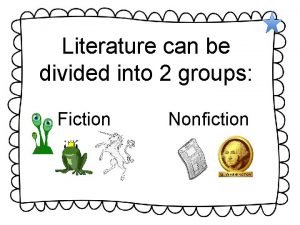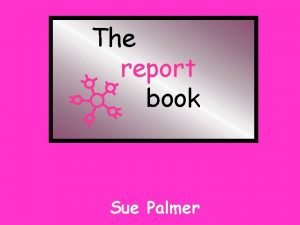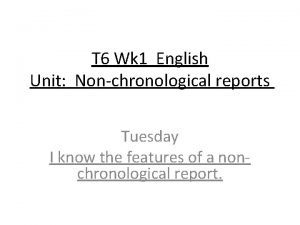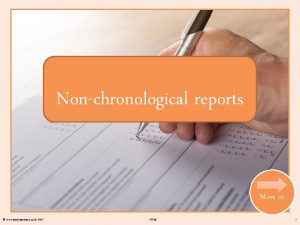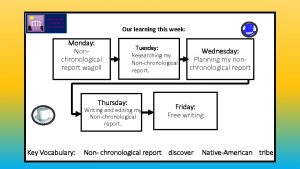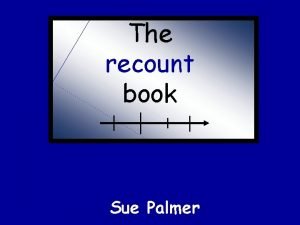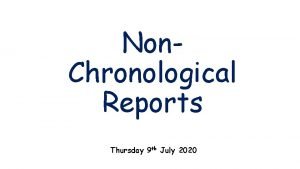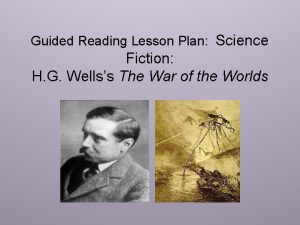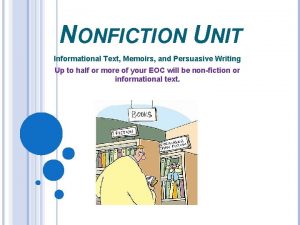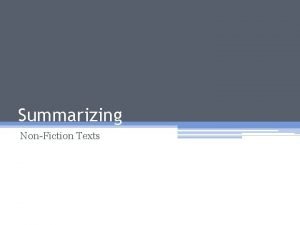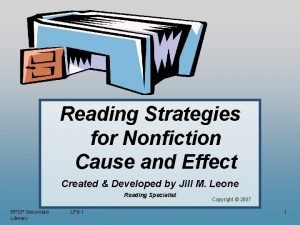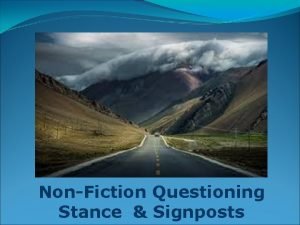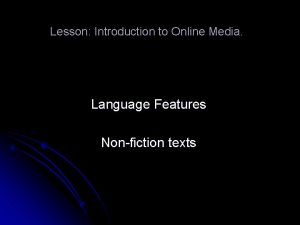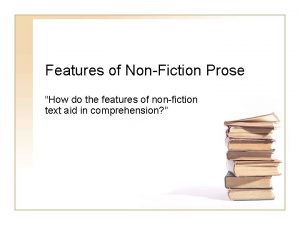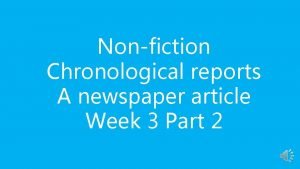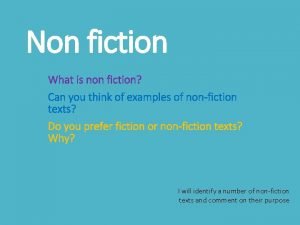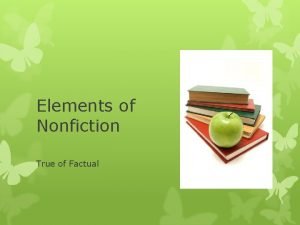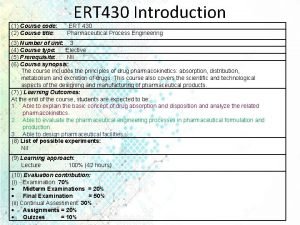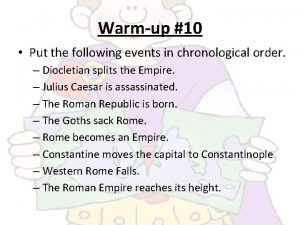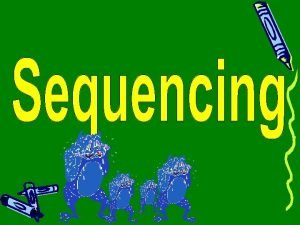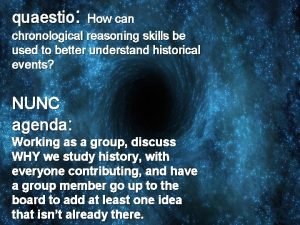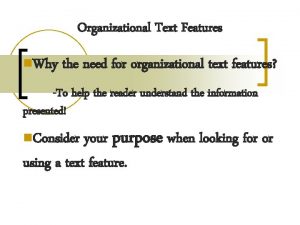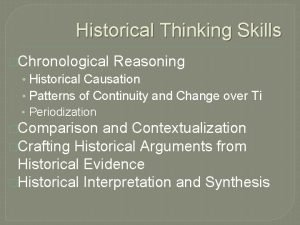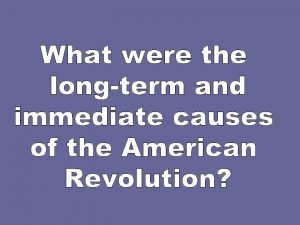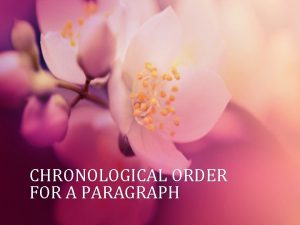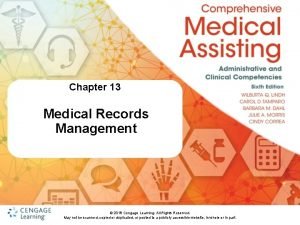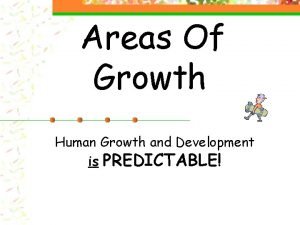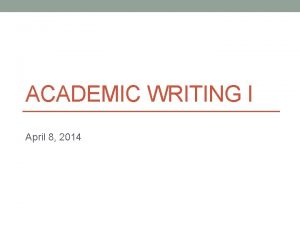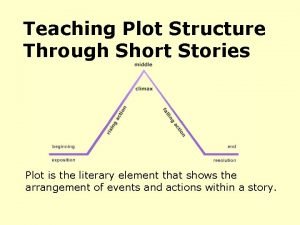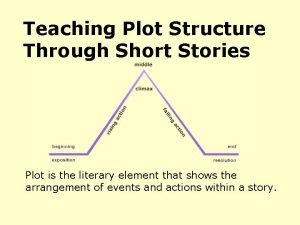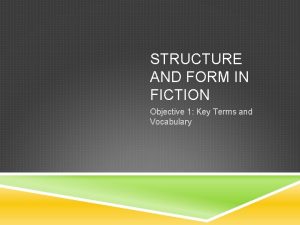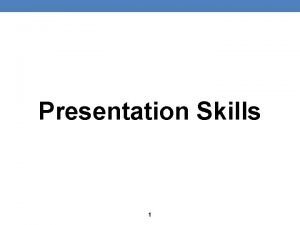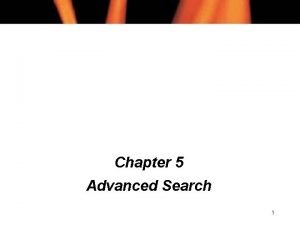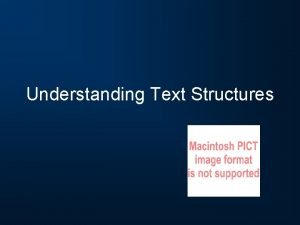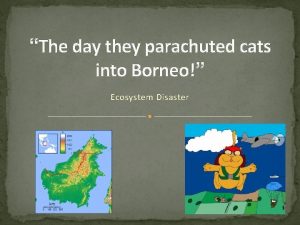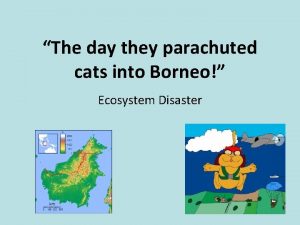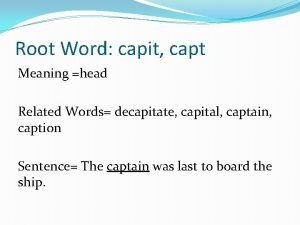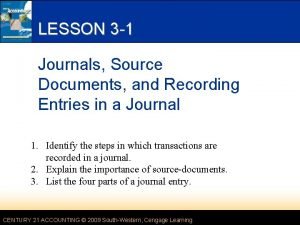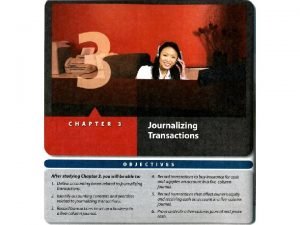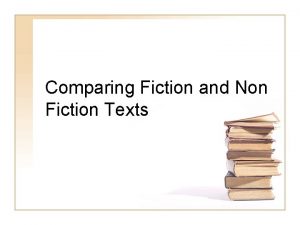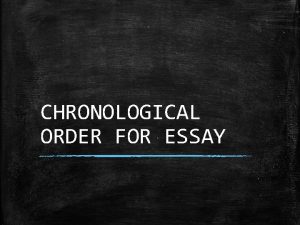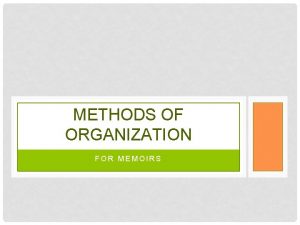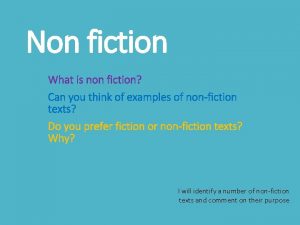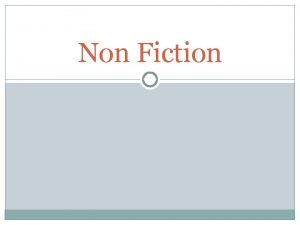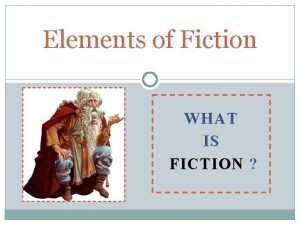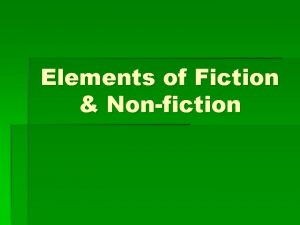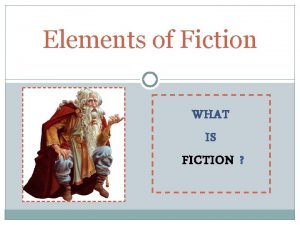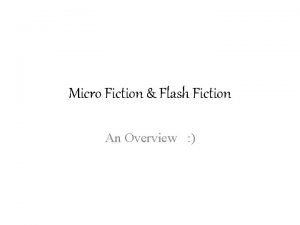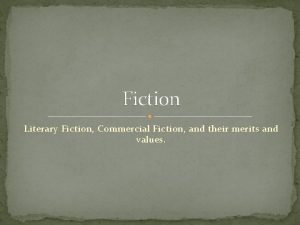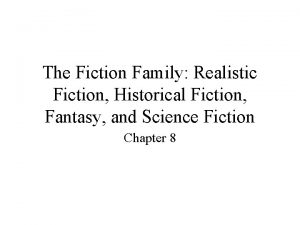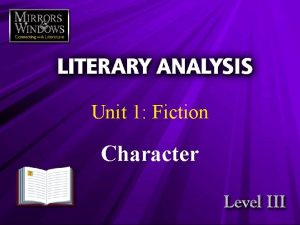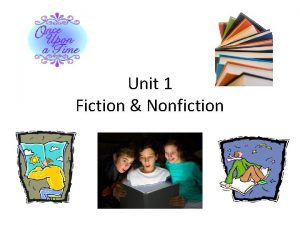Week 1 Lesson 1 Non Fiction Non Chronological























































- Slides: 55

Week 1

Lesson 1 Non Fiction - Non Chronological Reports Features

12 January 2022 LO: I can identify the features of a non-chronological report

Look at Non-Chronological Report examples in pairs. • How do they differ from story books? • What features can you find? Create a class list on board

Stick in Writing book

Task

Highlight Non Chronological Report features on sheet using Rubric Stick in Writing books

Feed back as a class and label features on the text

Lesson 2 12 January 2022 LO: I can research a topic and write notes about it. Resources – i. Pads for research

• Together, we will gather information about cats, using the books provided. • We will construct a spider diagram to collect the information into categories

• Now that we have collected all the information, we will be able to use it in the next lesson to start to write a nonchronological report all about cats.

Lesson 3

12 January 2022 • I can use my notes to write a paragraph for a non-chronological report

12 January 2022 LO: I can use my notes to write a paragraph for a nonchronological report Let’s review our planning from yesterday and remember some of the facts that we found about cats’ diets.

12 January 2022 LO: I can use my notes to write a paragraph for a non-chronological report Let’s also look at our rubrics (in our books) to remind ourselves about the features we need to include.

12 January 2022 LO: I can use my notes to write a paragraph for a nonchronological report Together, we will write a paragraph about cats’ diets for a non-chronological report using the information from yesterday’s spider diagram

12 January 2022 LO: I can use my notes to write a paragraph for a nonchronological report • Now that we have written a paragraph together, you are ready to write another one, based on our planning on cats’ health (5 H) or communication (5 M). • Try to make it as good as the one we wrote together!

Lesson 4

12 January 2022 LO: I can write an introduction and a conclusion for my report • What is the purpose of an introduction? • What is the purpose of a conclusion? • Do we have to write the words “introduction” or “conclusion” as sub -headings?

12 January 2022 LO: I can write an introduction and a conclusion for my report • Let’s look back at the example text we had about the Hobby. • Does it have an introduction? • What features would be good in an introduction? • What about a conclusion? • How might we improve the piece?

12 January 2022 LO: I can write an introduction and a conclusion for my report • Let’s look at the introduction and conclusion of another nonchronological report.

12 January 2022 LO: I can write an introduction and a conclusion for my report Let’s write a checklist of features that we need in our introduction and conclusion

12 January 2022 LO: I can write an introduction and a conclusion for my report Sample lists Intro: • A statement about how interesting the subject is • Rhetorical question • A “call to action” – i. e “So read on to find out…” Conclusion: • Mirrors intro • “Now you know all about…” • “As you can see…” • Sums up • Can we add any more features?

12 January 2022 LO: I can write an introduction and a conclusion for my report • Let’s work together to write an introduction to our report about cats – or do you think you could do it independently?

Lesson 5

12 January 2022 LO: I can use modal verbs

Modal Verbs Click for an introduction to modal verbs Click for another introduction to modal verbs (with added adverbs!)

Modal verbs are auxiliary verbs which cannot usually work alone. They are used with a main verb. These are modal verbs: might will should may would can could must shall ought to

Modal verbs make questions by inversion. She can go out. Can she go out? We could drive there. Could we drive there? Children should eat fruit. Should children eat fruit?

Modal verbs can be used to show possible something is, or how likely it is to happen/have happened. For example: He’s very late. He could have missed the train. It’s snowing so it must be very cold outside. They will lock the windows when they go out.

Can you spot the Modal verbs used to show possibility in these sentences? Mum might take us swimming after school. Youcould eat a banana instead of those sweets. “Hurry up! Wewill be late!” said Dad We can go the other way – it’s quicker. Youought to go to bed earlier. t Hurry up!

Which Modal verbs are missing from these sentences? Youmust be hot in that thick coat. If it’s dry, shall we play outside? He’s so fast, he shoul d win the race. I’m fed up with my long hair. might I have it cut. Did you choose these modal verbs? Which others could you have used?

Modal verbs can also be used to show: advice or obligation Pupils must wear a uniform. You should not be rude. permission habits I will often have cereal for my breakfast. We shall always enjoy a walk in the park. ability May I leave a few minutes early? I can drive a tractor. Could we go to the post box on the way? My grandfather could draw very well. Please can we have an ice cream?

Complete the sheet to show what you know about modal verbs!

Lesson 6 - Research

12 January 2022 LO: I can research a topic for my non-chronological report

12 January 2022 LO: I can use my notes to write a paragraph for a non-chronological report This week, we are going to write a non-chronological report about dogs. First, we will need to collect some information – just as we collected information about cats last week. Do you remember how we split our research into sections, as in this diagram?

12 January 2022 LO: I can use my notes to write a paragraph for a non-chronological report Use the information provided to produce your own spiderdiagram plan about dogs.

12 January 2022 LO: I can use my notes to write a paragraph for a non-chronological report Let’s share our research with each other. Let’s look at some examples under the visualiser. Feel free to “piggy-back” ideas and information.

Lesson 7 - Write

12 January 2022 LO: I can use my notes to write a non-chronological report Let’s review our planning from yesterday and remember some of the facts that we found about dogs and dog ownership.

12 January 2022 LO: I can use my notes to write a non-chronological report Let’s also look at our rubrics (in our books) to remind ourselves about the features we need to include.

12 January 2022 LO: I can use my notes to write a non-chronological report • Finally, let’s look at the paragraphs and introduction we wrote last week, about cats.

12 January 2022 LO: I can use my notes to write a non-chronological report • Let’s write! • Try to make it as good as the one we wrote together!

12 January 2022 LO: I can use my notes to write a non-chronological report • Let’s share!

Lesson 8 - edit

12 January 2022 LO: I can edit my work. • Let’s read through our nonchronological report and see what we think. • If we were editing it with editing stations, what could we add?

12 January 2022

12 January 2022

12 January 2022

12 January 2022

12 January 2022

12 January 2022 LO: I can edit my short story • We will visit each table for ten minutes each, and then move on to the next. • By the end, we will each have a fully edited piece of work. • Let’s go for it!

Lesson 9 – Final Draft

12 January 2022 LO: I can produce a final draft of my short story • You know what to do. Produce your final draft in your absolute best handwriting. • Remember to include all your edits.
 Characteristics of nonfiction
Characteristics of nonfiction Realistic fiction
Realistic fiction Genre of speculative fiction
Genre of speculative fiction Contemporary realistic fiction vs historical fiction
Contemporary realistic fiction vs historical fiction Week by week plans for documenting children's development
Week by week plans for documenting children's development Sue palmer explanation text
Sue palmer explanation text Panda non chronological report
Panda non chronological report What does non chronological report mean
What does non chronological report mean Ancient egypt non chronological report
Ancient egypt non chronological report Wagoll non chronological report
Wagoll non chronological report Sue palmer explanation text
Sue palmer explanation text Non chronological report conclusion
Non chronological report conclusion Science fiction lesson plans
Science fiction lesson plans Persuasive informational text
Persuasive informational text Summarizing nonfiction text
Summarizing nonfiction text Cause and effect nonfiction
Cause and effect nonfiction Non fiction signposts
Non fiction signposts Non fiction language features
Non fiction language features What is nonfiction prose
What is nonfiction prose Non fiction newspaper article
Non fiction newspaper article Non fiction defintion
Non fiction defintion Fictional character
Fictional character Nonfiction writing that is true or factual
Nonfiction writing that is true or factual This week's lesson
This week's lesson Lesson plan for revision week
Lesson plan for revision week Last week's lesson
Last week's lesson En moi seigneur viens mettre un autel
En moi seigneur viens mettre un autel List the following events in the correct order
List the following events in the correct order Medias.res
Medias.res Chronological signal words
Chronological signal words What are signal words
What are signal words Chronological signal words
Chronological signal words What is chronological reasoning
What is chronological reasoning Puberty
Puberty Example of enumeration
Example of enumeration Chronological reasoning
Chronological reasoning Chronological thinking
Chronological thinking Multiple tier timeline
Multiple tier timeline Example of chronological order paragraph
Example of chronological order paragraph Chapter 13 medical records management workbook answers
Chapter 13 medical records management workbook answers Achieving a masculine or feminine social role
Achieving a masculine or feminine social role Chronological signal words
Chronological signal words Manifold classification in statistics example
Manifold classification in statistics example Short story plot structure diagram
Short story plot structure diagram What is a plot in a story
What is a plot in a story Narrative structure examples
Narrative structure examples Logical chronological order
Logical chronological order Production rules for water jug problem
Production rules for water jug problem Chronological backtracking in depth first search involves
Chronological backtracking in depth first search involves Umur basal adalah
Umur basal adalah What does chronological mean
What does chronological mean Cats of borneo chronological order
Cats of borneo chronological order Cats rats and bugs in borneo story
Cats rats and bugs in borneo story Root for head
Root for head 1–2. received cash from owner as an investment. (p. 62)
1–2. received cash from owner as an investment. (p. 62) On each journal page, the date is written
On each journal page, the date is written

